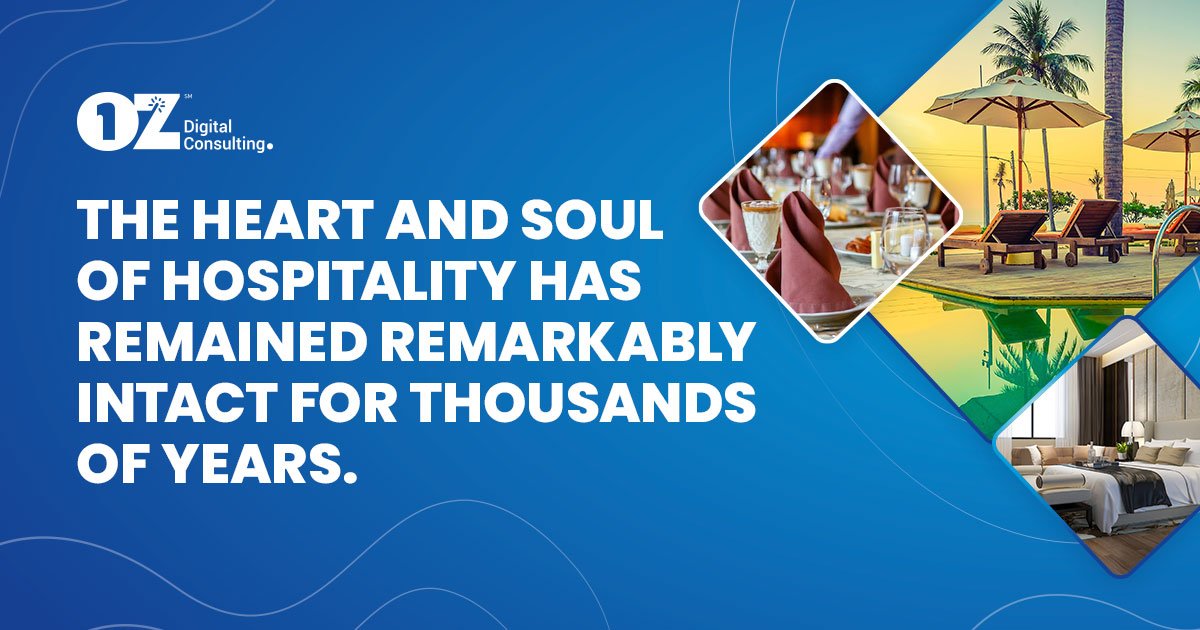Though the buzzwords and physical interfaces constantly shifted and evolved, the heart and soul of hospitality have remained remarkably intact for thousands of years.
And if the best way to get where you want to be is to have some understanding of how you got to where you are, then it’s worth taking a trip down the more hospitable stretches of memory lane.
Here are three profound, foundation-shifting historical waystations that can help inform the way you take your modern-day hospitality game to the next level.
1 – It all begins with xenia
The ancient Greeks did more than work tirelessly to define the meaning of existence and invent democracy—they also established the principle of xenia, the precursor to the concept of hospitality.
Xenia had two basic rules: First, a host must be hospitable while providing guests with a bath, food, drink, gifts, and a safe escort to their next destination. Second, a guest must be courteous towards their host.
See, the Greeks understood what a burden the act of travel was on their fellow man—especially in that age!—and sought a collaborative, synergistic solution.
2 – Epic Roman roadways industrialized hospitality
Roman expansion led to the construction of over 250,000 miles of roads throughout Europe and the Mediterranean region, establishing organizational systems and travel behaviors that have remained astonishingly similar for millennia.
Over 50,000 miles of those roads were paved with stone and had a relay station every twenty miles—i.e., a full day’s travel.
These relay stations not only served as a beacon of hope for the weary traveler but also fueled the Roman Empire through a circulatory system of stone, bustling with legionaries loading and unloading cargo and your average citizen watering their horse.
3 – Enjoy American chain restaurants? Thank a railroad.
Fires burned bright in the steam engines driving the Industrial Revolution. The Baltimore & Ohio Railroad was the first central railway in the 150,000 miles of track that would eventually cover and connect the United States.
And, like the Romans, railway owners understood the necessity for accessible, frequent stations to ensure travel kept pace with the aspirations and wanderlust of Americans.
When servicing these iron behemoths or efficiently sorting and collating passenger itineraries, these stations became a naturally evolving mecca for hospitality-related services.
Crafty railroad companies would partner with independent operators to establish nearby inns and, yes, restaurants.
Imagine the heartache of a 2:00 a.m. arrival where you couldn’t get a bite to eat or a place to sleep!
In 1876 one partnership kept millions from experiencing this harsh reality: Topeka & Santa Fe Railroad (AT&SF) and the Fred Harvey Company opened almost one hundred hotels and restaurants along the AT&SF main line, cementing the relationship between travel, dining, and amenities for all of the time.
An industry always moving forward
Modern hotels and restaurants may follow in ancient footsteps, but they’re embracing cutting-edge practices to keep operations smoother than a cobblestone road. Curating the perfect customer experience requires staying up to date on the latest trends to address current challenges like touch points and staffing.
When you’re ready to launch your enterprise into the ever-evolving hospitality future, OZ has a wide menu of customizable solutions to empower you to create memorable CX, boost ROI, and generate repeat visits. Click here now to find out more.



